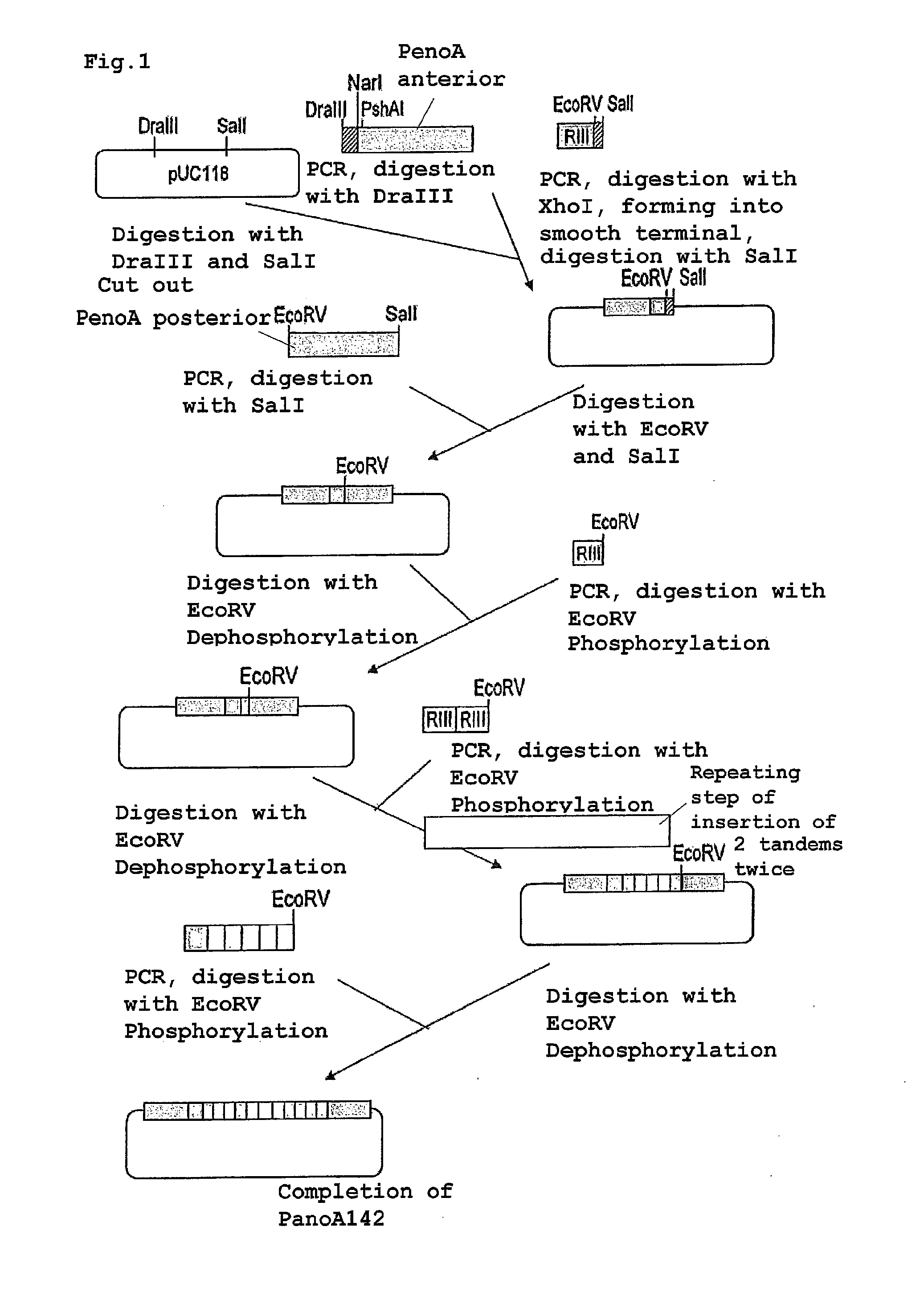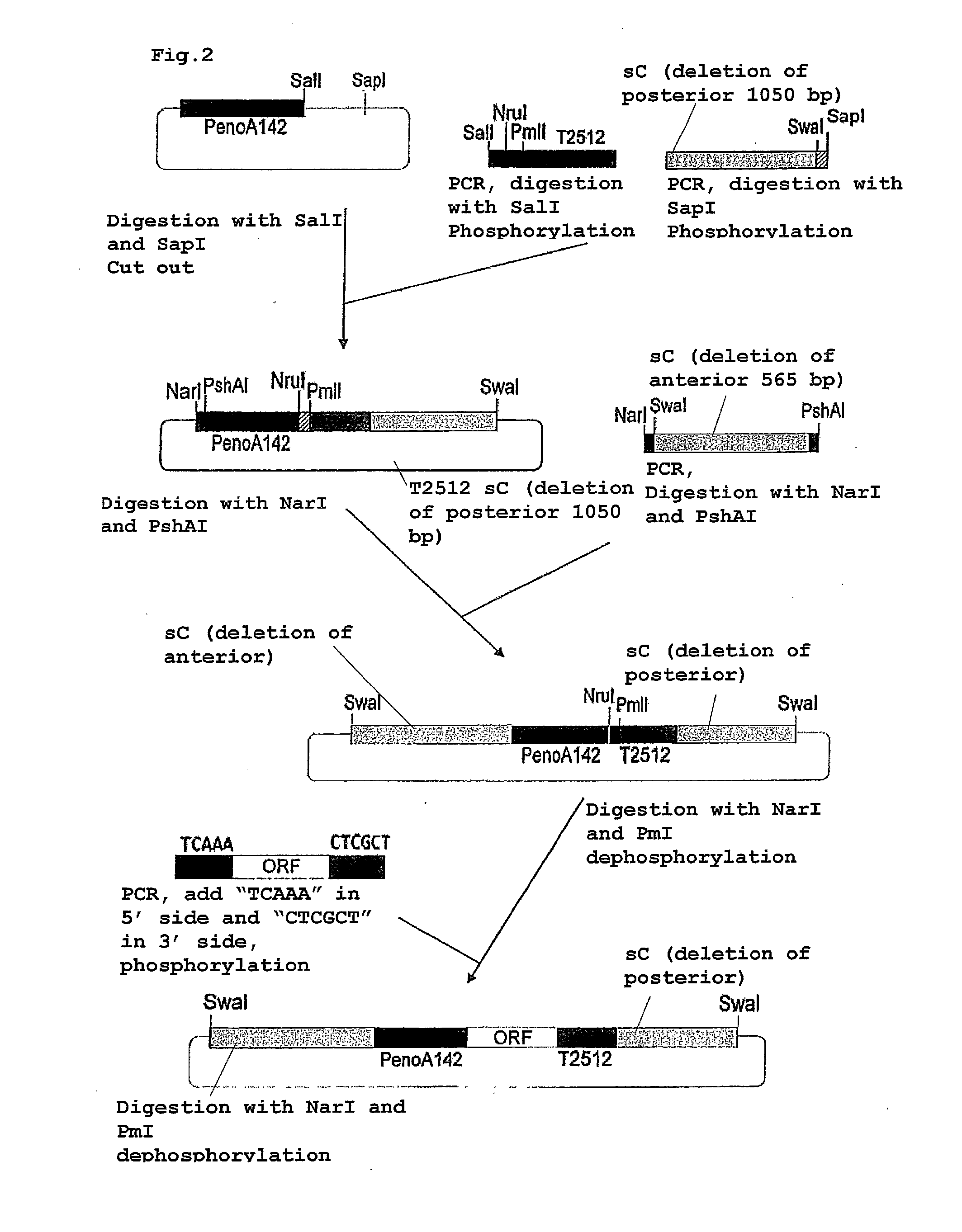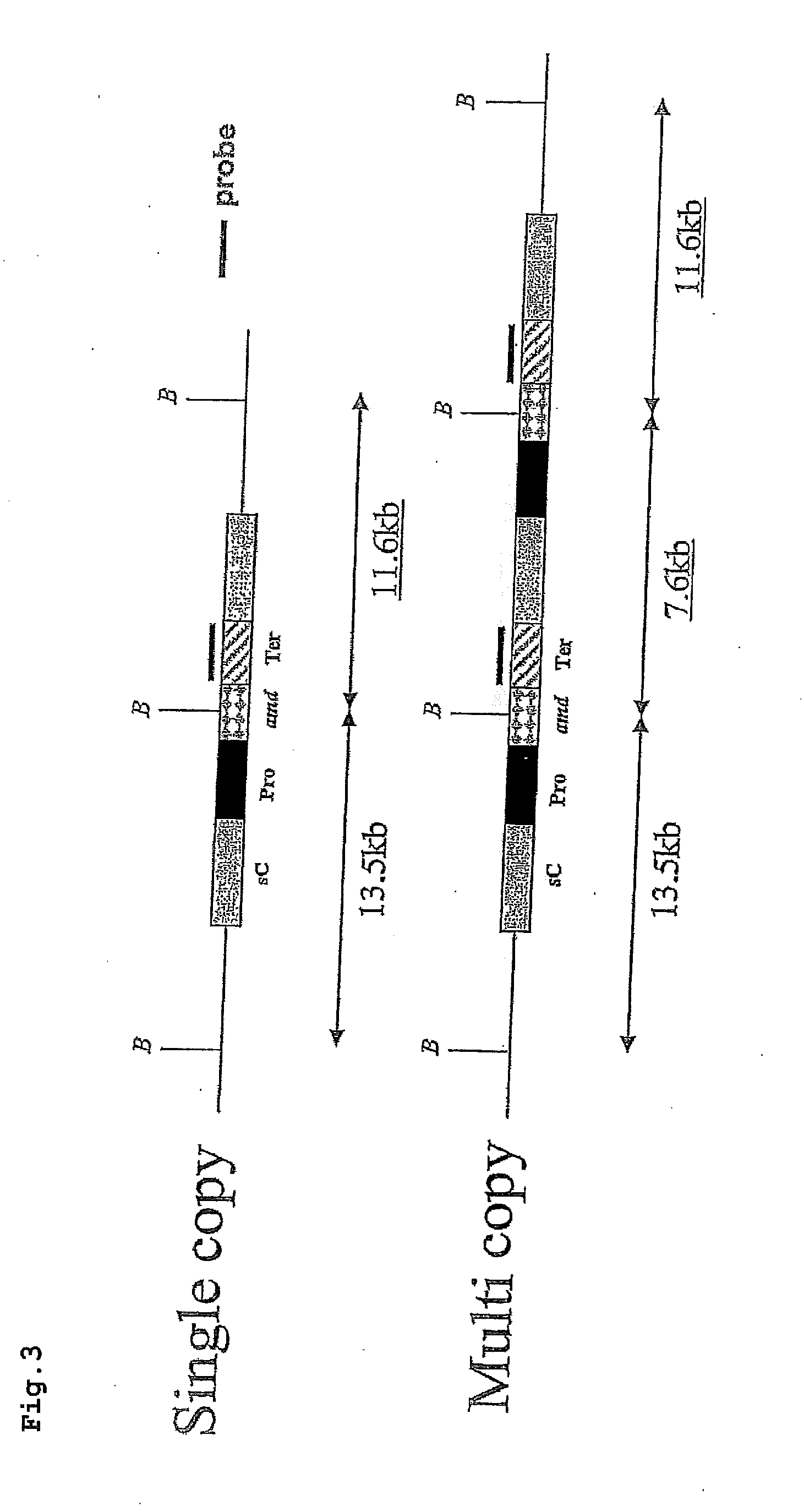Acrylamide-degrading self-cloning aspergillus oryzae
a technology of aspergillus oryzae and acrylamide, which is applied in the field of self-cloning aspergillus oryzae, can solve the problems of questioned safety of genetically modified microorganisms, and achieve the effect of effective and safe degradation and high amidase activity
- Summary
- Abstract
- Description
- Claims
- Application Information
AI Technical Summary
Benefits of technology
Problems solved by technology
Method used
Image
Examples
production example 1
Preparation procedure of PenoA142
[0070]A preparation procedure of a pSENSelf2 plasmid will be described along with FIGS. 1 and 2. As shown in FIG. 1, a preparation procedure of PenoA142 that is a modified promoter derived from Aspergillus oryzae will be described. Plasmid pUC118 (manufactured by TAKARA BIO INC.) was digested with restriction enzymes DraIII and SalI. The anterior part of PenoA was amplified by a PCR method using an Aspergillus oryzae RIB40 strain genome (obtained from National Research Institute of Brewing) as a template by use of primers X1 (SEQ ID NO: 5) and Y1 (SEQ ID NO: 6), and digested with restriction enzyme DraIII; region III was further amplified by a PCR method using primers X2 (SEQ ID NO: 7) and Y2 (SEQ ID NO: 8), formed into a blunt end after the treatment with restriction enzyme XhoI and then digested with restriction enzyme SalI. Next, three fragments of the above-described pUC118, anterior part of PenoA and region III were ligated.
[0071]Then, the obtai...
production example 2
Construction of pSENSelf2 plasmid
[0075]As shown in FIG. 2, the above-described PenoA142 (pUC118-PenoA142) was digested with restriction enzymes SalI and SapI. A 2512 terminator was amplified by a PCR method using the Aspergillus oryzae RIB40 strain genome as a template by use of primers X6 (SEQ ID NO: 14) and Y6 (SEQ ID NO: 15), treated with restriction enzyme SalI and then phosphorylated. Next, an sC marker having deleted posterior 1050 bases was amplified by a PCR method using the Aspergillus oryzae RIB40 strain genome as a template by use of primers X7 (SEQ ID NO: 16) and Y7 (SEQ ID NO: 17), treated with restriction enzyme SapI and then phosphorylated. Subsequently, these three fragments were ligated.
[0076]The obtained plasmid was digested with restriction enzymes NarI and PshAI. Then, an sC marker having deleted anterior 565 bases was amplified by a PCR method using the Aspergillus oryzae RIB40 strain genome as a template by use of primers X8 (SEQ ID NO: 18) and Y8 (SEQ ID NO: 1...
production example 3
Preparation of pSENSelf2-amidase Plasmid
[0078]The obtained pSENself2 plasmid was digested with restriction enzymes PmlI and NruI, isolated and purified by agarose gel electrophoresis, and then dephosphorylated. The obtained plasmid was amplified by a PCR method using the Aspergillus oryzae RIB40 strain genome as a template by use of primers X9 (SEQ ID NO: 20) and Y9 (SEQ ID NO: 21), digested with restriction enzymes PmlI and NruI and phosphorylated. The primer X9 (SEQ ID NO: 20) contained 5 bases in the 3′ terminal of enoA 5′UTR and the primer Y9 (SEQ ID NO: 21) contained 6 bases in the 5′ terminal of the 2512 terminator, and these fragments were introduced by ligation. Accordingly, a pSENSelf2-amidase plasmid could be constructed.
PUM
| Property | Measurement | Unit |
|---|---|---|
| Fraction | aaaaa | aaaaa |
| Fraction | aaaaa | aaaaa |
| Ratio | aaaaa | aaaaa |
Abstract
Description
Claims
Application Information
 Login to View More
Login to View More - R&D
- Intellectual Property
- Life Sciences
- Materials
- Tech Scout
- Unparalleled Data Quality
- Higher Quality Content
- 60% Fewer Hallucinations
Browse by: Latest US Patents, China's latest patents, Technical Efficacy Thesaurus, Application Domain, Technology Topic, Popular Technical Reports.
© 2025 PatSnap. All rights reserved.Legal|Privacy policy|Modern Slavery Act Transparency Statement|Sitemap|About US| Contact US: help@patsnap.com



